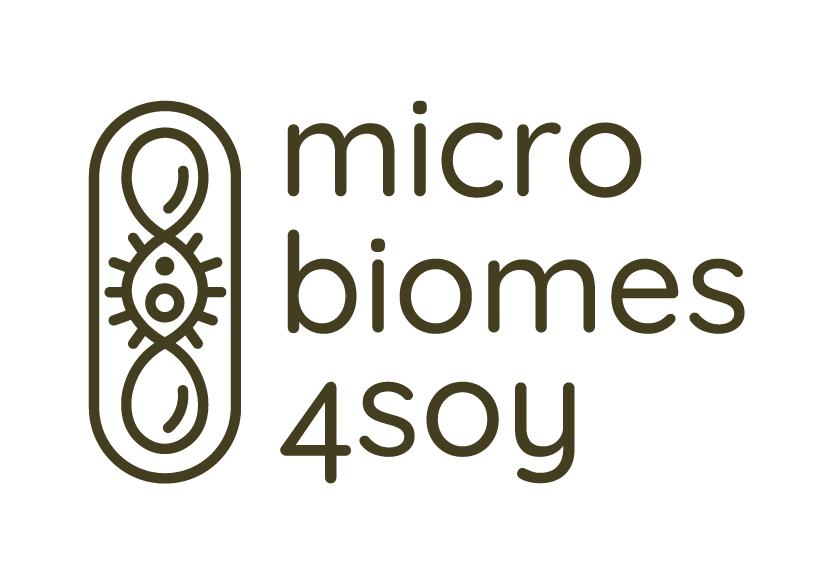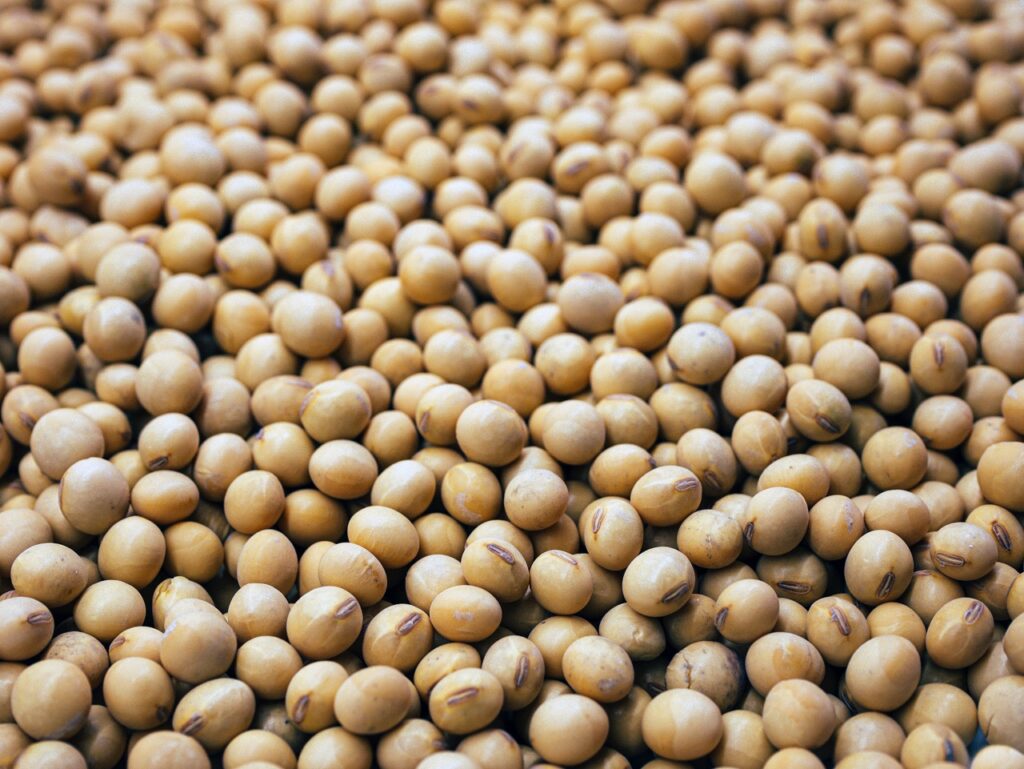Glossary
A microbiome describes a community of microorganisms – such as bacteria, archaea, viruses and fungi – along with their structural elements and metabolites, existing in a specific environment.
Microbiomes are found in and on humans, animals and plants, and they exist on land, in the air and in the water. They encompass the full ecosystem of microorganisms in a particular place, like in the gut, on the skin, or within soil. Whereas the assembly of microorganisms living together in a habitat is called “microbiota”, the microbiome expands this to include how the different microorganisms interact with each other and their surroundings.
This concept is based on the idea of a “biome”, which encompasses both the living (biotic) and the non-living (abiotic) factors of an environment. In food systems, microbiomes play an important role in soil health, plant productivity and the well-being of humans and animals, impacting the entire value chain from food production to the final product.
Source: Berg, G., Rybakova, D., Fischer, D. et al. Microbiome definition re-visited: old concepts and new challenges. Microbiome 8, 103 (2020). https://doi.org/10.1186/s40168-020-00875-0
Gut microbiota refers to the community of microorganisms living within our digestive system, particularly in the colon. Each person has a unique community of microorganisms living in their gut, which is initially influenced by genetics and birth, but changes throughout a person’s life due to factors like diet, age, geographical location, and the use of certain medications, like antibiotics.
While scientists may not yet know exactly what the “ideal” gut microbiota looks like, it is proven that the microorganisms and their activities are crucial for our health, influencing digestion, immunity, and even mental well-being.
Source: https://worldmicrobiomeday.com/wp-content/uploads/2019/06/2019-Gut_Microbiota-ISAPP.pdf
Microbial inoculants, also known as bioinoculants, are beneficial microorganisms that support plant growth by directly or indirectly enhancing nutrient availability and promoting plant health.
In soya production, bioinoculants are used to promote crop growth, improve nutrient availability, and increase stress tolerance. Bioinoculants are seen as an eco-friendly, cost-effective alternative to conventional farming practices.
Source: Compant, S., Cassan, F., Kostić, T. et al. Harnessing the plant microbiome for sustainable crop production. Nat Rev Microbiol23, 9–23 (2025). https://doi.org/10.1038/s41579-024-01079-1
In agriculture, collaboromes are groups of beneficial microorganisms (or “microbial consortia”, by scientists also frequently called “SynComs”) that work together to support plant growth. The Microbiomes4Soy project is leading the way in identifying specific collaboromes by using novel approaches such as artificial intelligence and predictive models. This innovative approach helps us understand how microbiomes are formed and allows us to select collaboromes that can enhance plant growth, adapt to different field conditions, and efficiently colonise plants.
Source: Shayanthan, A., Ordoñez, P.A., & Oresnik, I.J. (2022). The Role of Synthetic Microbial Communities (SynCom) in Sustainable Agriculture. Frontiers in Agronomy. https://doi.org/10.3389/fagro.2022.896307
The genome is the complete set of DNA instructions that guide the development and function of an organism. In humans, animals, plants and even microorganisms, the genome contains all the information necessary for life.
In soya beans, the genome consists of:
- 20 pairs of chromosomes – Found in the cell’s nucleus, containing the primary genetic instructions.
- A small chromosome – Located in the mitochondria, helping regulate energy production.
Source: https://www.ncbi.nlm.nih.gov/datasets/genome/GCF_000004515.6/
The term “phenotype” refers to the observable characteristics of an organism. It comes from the word “phenomenon,” meaning something we can observe or measure. Phenotypes can include traits like:
- Physical features – Such as height, hair colour or eye colour.
- Health indicators – For example, the presence or absence of a disease.
Understanding the phenotype of soya beans is key to identifying how specific traits, such as growth patterns and disease resistance, are influenced by the microbiome and the environment.
Soil is one of the most intricate ecosystems on Earth, home to a wide variety of microorganisms that regulate soil fertility, nutrient cycles, and carbon sequestration. These microbial communities are vital for maintaining soil health, which in turn supports sustainable agriculture.
However, the ecological footprint of modern farming is substantial, and many soils are being severely damaged by intensive agricultural practices, threatening their ability to support healthy soya crops and ecosystems.
The Microbiomes4Soy project is exploring the relationship between soil microbiomes and soya bean crop performance, with the goal of informing future agricultural practices and improving soya bean yields across Europe.
Source: https://www.microbiomesupport.eu/wp-content/uploads/2023/02/MicrobiomeSupport-Brochure-2022EN.pdf
Sustainable agriculture is a practice of farming that balances food production with protecting our planet and supporting communities. Though definitions and approaches vary, it generally focuses on:
- Meeting present and future needs by producing food without depleting resources for future generations.
- Protecting the environment by preserving resources like healthy soil, clean water, and biodiversity.
- Using resources efficiently through waste reduction, improved energy and water management, and nature-based solutions such as biological pest control.
- Ensuring economic viability by supporting farmers in a just transition to sustainable practices, making farming both resilient and financially stable.
Source: https://www.fao.org/sustainability/en/?utm_source=twitter&utm_medium=social+media&utm_campaign=faodg
Regenerative agriculture is a farming approach that works with nature to enhance soil health, support the functioning of ecosystems, and produce food and fibre sustainably. Unlike traditional methods, it focuses on increasing biological activity in the soil to improve fertility and enhancing nutrient cycling for healthier crops. This approach doesn’t aim to bring back pre-agriculture ecosystems. Instead, it integrates natural processes into farming systems to make them more resilient, efficient, and profitable.
Regenerative agriculture is considered an approach to achieving sustainable agriculture, focusing on restoring and enhancing natural resources while maintaining productivity.
A sustainable food system ensures everyone has access to nutritious food now and in the future, without harming the planet or society. While it includes agriculture, it also encompasses the other elements along the food value chain – like food processing, distribution, and consumption. It is built on three key pillars:
- Economic sustainability: It supports profitable and resilient food businesses.
- Environmental sustainability: It protects natural resources and minimises harm to the planet.
- Social sustainability: It benefits society, including marginalised and vulnerable populations.
Aquaculture is a food production system that involves raising aquatic animals (i.e., fish, crabs, and shellfish) as well as growing aquatic plants (i.e., seaweed and certain freshwater plants) for human and animal consumption. Unlike land farming, which uses primarily freshwater, aquaculture can take place in freshwater, salty coastal waters, and brackish water (a mix of freshwater and seawater).
Aquaculture is highly relevant for sustainable food systems. Compared to traditional meat production, marine-based protein sources can significantly reduce greenhouse gas emissions, require less land, and conserve vital resources like freshwater. Aquaculture also offers a solution to address global food security, providing nutrition to a growing population. With proper support from public and private sectors, aquaculture can play a pivotal role in transforming food systems and addressing the environmental challenges of feeding the world.
Fermentation is a metabolic process in which microorganisms, either naturally present in food or added, break down complex nutrients in food into simpler components. This process brings about a transformation in the taste, texture, digestibility and shelf life of the food. From sourdough bread to yogurt and kimchi, fermentation has been shaping our ever day foods for centuries.
Prebiotics are food components (such as fibres) which serve as nourishment for the microorganisms residing in our gut, providing health benefits. Prebiotics consist of non-digestible fibres that serve as sustenance for these microorganisms, fostering their proliferation and function. Some of these microorganisms are considered probiotics.
Probiotics are living microorganisms (such as bacteria and yeasts) which, when consumed in sufficient quantities, can yield health benefits.
Source: Hill, C., Guarner, F. et. Al. The International Scientific Association for Probiotics and Prebiotics consensus statement on the scope and appropriate use of the term probiotic. Nature Reviews gastroenterology & hepatology. (2014).
Isoflavones are dietary compounds isolated from soya beans, rich in phytoestrogens, which are natural compounds found in plants that mimic the hormone oestrogen in the body. Although the exact mechanism of action isn’t fully understood, soya isoflavones act like a weak form of oestrogen in the body. They attach to special sites in cells called oestrogen receptors, influencing how the body processes oestrogen.
Isoflavones have been shown to reduce the rapid growth of tumour cells, induce tumour cell death and help regulate the balance of hormones. This makes soya isoflavones beneficial for reducing the risks of breast cancer, heart disease, and osteoporosis.
Source: https://www.cancer.gov/publications/dictionaries/cancer-drug/def/soy-isoflavones
Anti-nutritional factors (ANFs) are natural compounds in food that can block the body from fully absorbing the nutrients in food, potentially lowering the overall nutritional value of foods consumed. They’re present in varying amounts depending on the type of food, hence not all foods are equally affected.
The Microbiomes4Soy project addresses the challenge of ANFs in soya by exploring heat and microbiome-based treatments to reduce their negative effects, enabling the safe and effective use of soya as a sustainable protein source in fish feed.
Source: Hamid, Hamid & Thakur, N. & Kumar, Pradeep. (2017). Anti-nutritional factors, their adverse effects and need for adequate processing to reduce them in food. AgricINTERNATIONAL. 4. 56. 10.5958/2454-8634.2017.00013.4.
Bioavailability refers to the proportion of a nutrient that gets digested, absorbed, and processed through normal pathways. So, when choosing supplements or planning your diet, it’s not just the nutrient content that matters but how much of it is truly available to benefit your body.
The Microbiomes4Soy project aims to utilise innovative fermentation techniques with microorganisms to enhance the bioavailability of soya nutrients, ensuring greater nutritional value while reducing anti-nutritional factors.
Source: Bioavailability of Nutrients: A Practical Approach to In Vitro Demonstration of the Availability of Nutrients in Multivitamin-Mineral Combination Products. Srinivasan, V. Srini. The Journal of Nutrition, 131(4), 1349S – 1350S.
To ensure that research and project results translate into real-world solutions, collaboration is key. The multi-actor approach (MAA) brings together experts from various fields — for instance, researchers, industry, consumers and any stakeholders with relevant knowledge who will be involved throughout the entire project duration — to tackle project objectives effectively. This approach ensures diverse expertise, real-world impact, and broad communication. Moreover, those benefiting directly from the results of the projects will be more motivated to use them, because they were involved in generating them.
Planetary health is a concept that recognises the deep connection between the health of our planet and the well-being of humans. Our civilisation relies on well-functioning natural systems and the wise stewardship of resources. But today, natural systems are being degraded at an unprecedented rate, putting both our health and the earth’s well-being in danger.
Source : https://unfccc.int/climate-action/un-global-climate-action-awards/planetary-health
One Health is a holistic approach that seeks to sustainably balance and optimise the health of people, animals, and ecosystems. It acknowledges that the health of humans, animals (domestic and wild), plants, and the environment are deeply interconnected. To enable the One Health approach, collaboration across sectors — health, food, water, energy, and the environment — is essential for tackling shared challenges. By uniting disciplines, One Health addresses critical issues like the emergence of infectious diseases, antimicrobial resistance and food safety, among others.
Microbiomes are a critical component of the One Health concept, as they support nutrient cycling, disease prevention, and overall ecosystem resilience. A diverse soil microbiome, for example, improves crop yields and reduces the need for chemical fertilisers, while a diverse gut microbiome strengthens immunity and digestion.
Source: https://www.who.int/news-room/fact-sheets/detail/one-health & https://sustainable-food-systems-network.mobilize.io/links?url=https%3A%2F%2Fwww.pharmabiotic.org%2Fmicrobiome-science%2F&lid=FNOzsIhfJGpsZ3k8EEhuYg&token=LVyudRTYlsNAnRhYDdIalQ
Food 2030 is the EU’s research and innovation policy framework, driving the transition towards sustainable, healthy, and inclusive food systems that respect planetary boundaries. Aligned with the European Green Deal, Farm to Fork Strategy, and Bioeconomy Strategy, Food 2030 focuses on fostering a multi-actor and systemic approach to research and innovation. By bringing together diverse stakeholders, it aims to deliver co-benefits for people’s health, our climate, planetary ecosystems, and vibrant communities.


